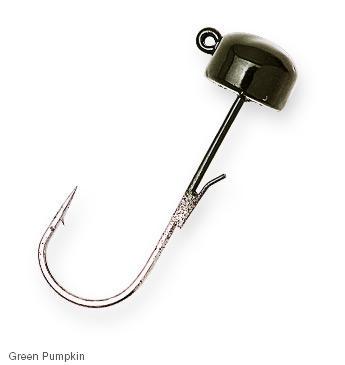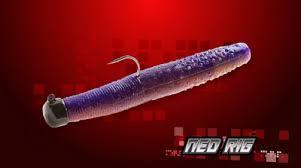Fellow Club members: following is a kinda long Christmas letter to my nephews in Florida; thought you might find some of it interesting reading, or something you might want to share with kids in your family. This is highly secretive stuff that I normally wouldn't even share with Dennis or Wayne, but it IS Christmas after all. (Also, one of the great things about this club is, by the time it's warm enough for any of you to use these recommendations, most will have forgotten about it anyway.) Merry Christmas! Bill
Dear nephews,
Okay, so your favorite uncle hears you fellows are getting into fishing more seriously these days, so I’m sharing more of my favorite Ned Rig baits and advice based on how they work here in Colorado. I’m sending along a few bigger soft and hard plastic baits - spinner baits and crankbaits - because being young you may prefer to fish faster and use heavier gear, and these should work in Florida as they do here. (You may also find spinner baits work well in stained and muddy water, which you may find in your area). But your uncle is obsessively into “finesse fishing” - getting by with the lightest gear I can without losing too many big ones. My go-to rig is a medium light spinning rod, size 2500 reel and 4- or 6-pound Berkley Nanofil brand braid, with a 6-pound fluorocarbon leader. For Florida, I’d recommend going heavier, maybe 8- or 10-pound braid and leader. It’s tricky to attach the braid to the leader, but you’ll find tutorials on Youtube and master it with a little practice. I recommend the double uni knot; it won’t slip.
Anyway, five or six years ago at Christmas, I sent you some of my then- favorite baits, with an explanation of how to use the “wacky rig,” a salt-enhanced plastic bait that you fish weightless and let it slowly sink in places that likely hold bass. I still use the wacky rig a good deal, and hope you do too. But you may recall from our Horsetooth outing, I now rely more on something called the “Ned Rig” developed by a codger in Kansas whom I’ve become acquainted with online. Back three years ago, the only way I could acquire his gear was online, at places like Tackle Warehouse and Discount Tackle. Now the “TRD” and other small plastic baits seem to be everywhere under the brand name “Elaztech” by Z-Man. They still work great, but annoyingly, a lot more fishermen now swear by them. Z-man has come out with a bewildering variety of large and small baits. In Florida, your fish run a lot bigger than what I find here in Colorado and Wyoming. But I think Ned’s basic premise is true everywhere: the old fisherman’s tale that small baits only catch small fish is B.S.; if you use the Ned Rig, you’ll catch a lot of smaller bass, yes, but you’ll also attract big ones.
Not knowing what gear you use, I’ll assume it’s heavier than mine. Just get out and fish, and see what works for you. Lighter gear will just help you cast further. The heart of the setup is a simple mushroom head jig and a 2.5 inch floating soft bait, the most well known being the “TRD” in a variety of colors. I prefer California Craw and Green Pumpkin. One neat thing is, they are tough. Take one out and yank; it’ll stretch 10 inches or so without breaking. If you don’t hang up on a stump, you can catch 50 or 100 fish with one. Trust me on this. If you look in Bass Pro these days, you’ll find a whole section devoted to Z-man stuff; the crawdad imitation is cool, and the “Slim SwimZ” that’s shaped like a minnow. I ignore the great big stuff. Just use the small mushroom-shaped jig. If you find your TRD slips down the shank of the jig after a bit, you can fix it by first applying a tiny dab of Super Glue between the nose of the TRD and the flat bottom of the mushroom.
This is finesse fishing, and you want to fish slow. If I can, I’ll use a 1/20 or even 1/32 oz. jig with a size 4 hook, so it sinks s.l.o.w.l.y to the bottom. This little bait is buoyant; fish it with a mushroom head jig and it floats nose down and stands straight up on the bottom looking like an easy meal. You shouldn’t even feel it hit the bottom. Assume it’s sunk down and just let it sit for 30 seconds or so, then twitch or hop it back to you. Z-man and others also make mushroom jigs in 1/10, ⅙ or even ⅛ oz sizes. Not my favorite; they sink too fast and make it harder to detect a soft bite.
If you’re fishing from one of those kayaks I’ve seen on your Mama’s Facebook page, terrific. Or from the bank of those ponds you have everywhere around Sarasota. You should only be casting out 30 feet or slow and watching carefully for unnatural movement, which is hopefully a bass or big crappie spotting an easy meal, taking it in its mouth and swimming off. You don’t need to jerk hard to set the hook; if you don’t give the fish too much time to swallow, it will almost always hook itself in the lip. They also make a weedless version, if you fish in brushy or weedier water. I’m usually fishing in 2- to 8-feet of relatively open water, and prefer to rig it like the photo below. Avoid water that has too much vegetation on the bottom; the Ned rig will be heading nosedown to the bottom.


ElaZtech now sells its soft plastic to others, and you can find “Ned Rig” type baits sold by YUM, Gene Larew Lures, Zoom and Strike King. I assume you can get by with any floating soft bait, but Senkos and other salt-loaded plastics fall over. Just cast, hop that jig along the bottom, nose down., and hang on.
The bait I use most is Z-man’s 2.5 inch “The Real Deal,” or TRD, or Turd, above. Again, it’s basically the ZinkerZ cut in half. They’re durable; unless you snag, you should be able to use the same setup for 2 or 3 days or more of hard fishing. They also absorb scent pretty well; I daub mine with Pro-Cure Super Gel Nightcrawler. Stretch the bait a little, rub the Pro-Cure in and try not to smell your hands.
You just bury the jig in either end and fish it bare hook, like the illustration above. It looks like it would snag a lot, but it’s so light you can fish in pretty heavy rock cover and usually be able to work it free. Just don’t yank and bury the hook in a log; try to jiggle it loose. The same can’t be said in heavy weeds or brush; I try to avoid them when I can and focus on rocky areas or weed edges. As the season progresses on ponds, it’s hard to avoid hanging up on shoreline weeds, so the kayak is the way to go. I use a float tube, but in Florida you’d probably attract alligators.
Personal preference: I also crimp the barbs. I know I’m losing fishing that way, but you get lots of bites, and anyway, you should just be giving these fish a kiss and letting them go.
This rig allows you to cover more water than my other favorite finesse technique, the wacky rig, but you’re still not covering much water. So if you start off clueless on fish the fish are, start with something like a spinnerbait or crank, until you get a feel for where the fish are and how deep they’re holding.
That’s pretty much it. If you start finding yourself overly attracted to girls, just take them fishing. And take your little sister along!
Love, Uncle Bill
Christmas 2020
(One final thought: Z-man plastic reacts with other kinds of soft plastics. Keep your TRD’s in original bag.)











